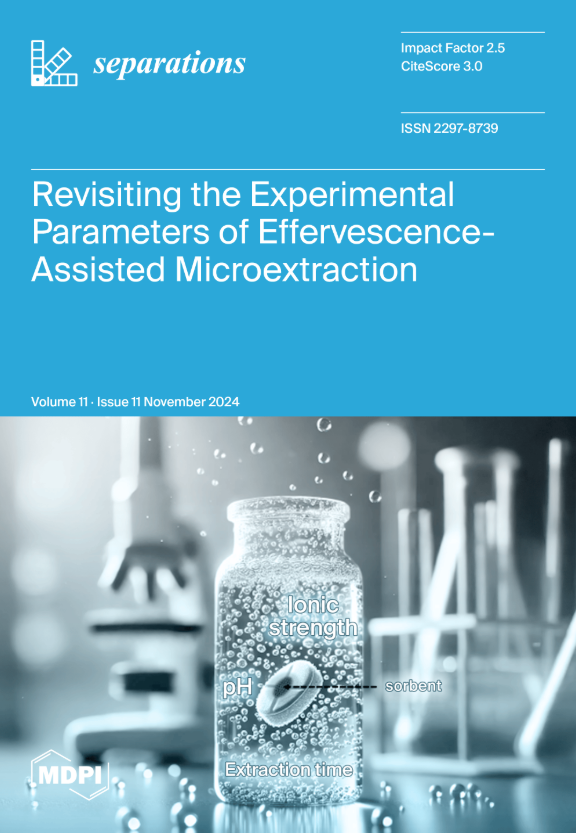通过实验和数值工具研究用于塑料颗粒分拣的水力通道
IF 2.7
4区 工程技术
Q3 CHEMISTRY, ANALYTICAL
引用次数: 0
摘要
近几十年来,化石基聚合物的多功能性使其成为生产多种消费品的最常用材料之一。消费后塑料的命运对环境可持续性至关重要。垃圾填埋的替代方法有两种:(i) 能源回收,即用塑料垃圾替代传统燃料;(ii) 循环利用,即对塑料废物进行加工,生产可替代主要原材料的二次原材料。这项工作介绍了一种用于液压分离异质塑料废物的装置的研究,该装置经适当升级后,可在回收厂内有效使用。该装置适用于分离密度大于 1000 公斤/立方米的颗粒状或片状塑料,可替代现有的机械回收技术。该设备的目的是从塑料和水的混合物中分离出有用的部分。分离过程的效率取决于被处理塑料颗粒的密度、尺寸和形状差异,以及装置内的流动特征。我们进行了实验来测试该装置的功效与这些因素的关系。为了扩大影响设备工作原理的关键参数的变化范围,我们采用了计算流体动力学来建立设备的数值模型。经过验证的数值模型适用于全面鉴定该装置的性能,其特点是采用了内网格尺寸为 3-10-3 m 的混合网格,对近壁区进行了仔细建模,并采用了 k-ω SST 湍流模型。本文章由计算机程序翻译,如有差异,请以英文原文为准。
Investigation of a Hydraulic Channel for Plastic Particles Sorting via Experimental and Numerical Tools
In recent decades, the versatility of fossil-based polymers has led them to become one of the most used materials for the production of several consumer goods. The destiny of post-consumer plastics is crucial for environmental sustainability. Two are the alternatives to landfilling: (i) energy recovery, i.e., replacement of traditional fuel with plastic litter, and (ii) recycling, i.e., processing of plastic wastes to produce secondary raw materials that may substitute primary raw materials. This work presents the investigation of a device for the hydraulic separation of heterogeneous plastic wastes, which, when properly upscaled, may be efficiently used within recycling plants. This apparatus is suitable for the separation of granules or flakes of plastics with a density higher than 1000 Kg/m3 and may replace existing technologies for mechanical recycling. The purpose of the device is to separate the useful fraction from a mixture of plastics and water introduced inside. The separation procedure efficacy relies on the difference in density, dimension, and shape of the processed plastic particles and on the flow features within the device. Experiments were carried out to test the efficacy of the device as a function of those factors. To increase the range of variation in the key parameters influencing the apparatus’s working principles, Computational Fluid Dynamics was employed to build a numerical model of the device. The validated numerical model suitable to fully characterize the apparatus performance features a hybrid grid with an inner mesh of 3·10−3 m size, a careful modeling of the near-wall region, and the k-ω SST turbulent model.
求助全文
通过发布文献求助,成功后即可免费获取论文全文。
去求助
来源期刊

Separations
Chemistry-Analytical Chemistry
CiteScore
3.00
自引率
15.40%
发文量
342
审稿时长
12 weeks
期刊介绍:
Separations (formerly Chromatography, ISSN 2227-9075, CODEN: CHROBV) provides an advanced forum for separation and purification science and technology in all areas of chemical, biological and physical science. It publishes reviews, regular research papers and communications. Our aim is to encourage scientists to publish their experimental and theoretical results in as much detail as possible. There is no restriction on the length of the papers. The full experimental details must be provided so that the results can be reproduced. There are, in addition, unique features of this journal:
Manuscripts regarding research proposals and research ideas will be particularly welcomed.
Electronic files and software regarding the full details of the calculation and experimental procedure, if unable to be published in a normal way, can be deposited as supplementary material.
Manuscripts concerning summaries and surveys on research cooperation and projects (that are funded by national governments) to give information for a broad field of users.
The scope of the journal includes but is not limited to:
Theory and methodology (theory of separation methods, sample preparation, instrumental and column developments, new separation methodologies, etc.)
Equipment and techniques, novel hyphenated analytical solutions (significantly extended by their combination with spectroscopic methods and in particular, mass spectrometry)
Novel analysis approaches and applications to solve analytical challenges which utilize chromatographic separations as a key step in the overall solution
Computational modelling of separations for the purpose of fundamental understanding and/or chromatographic optimization
 求助内容:
求助内容: 应助结果提醒方式:
应助结果提醒方式:


